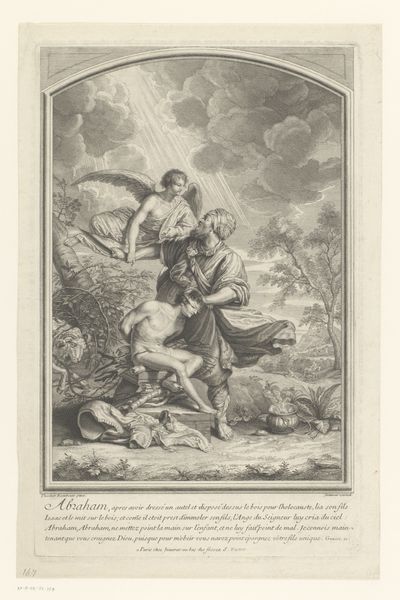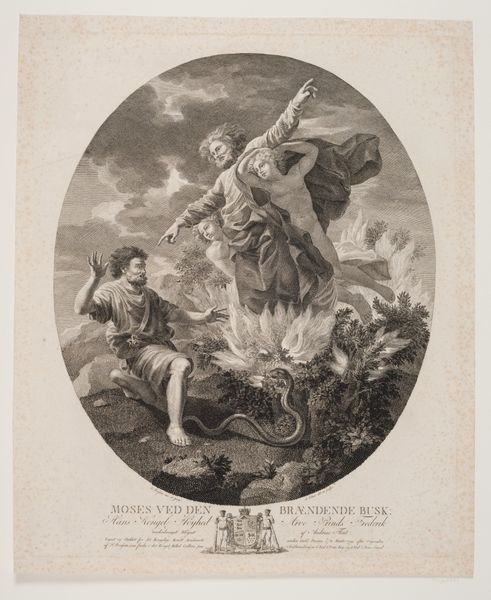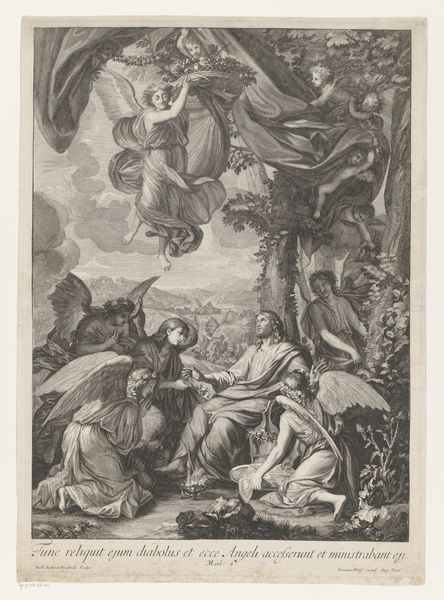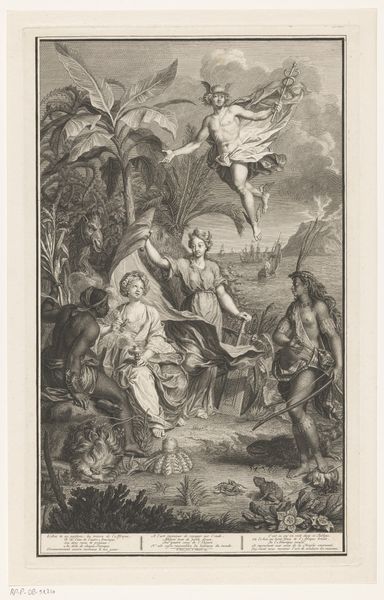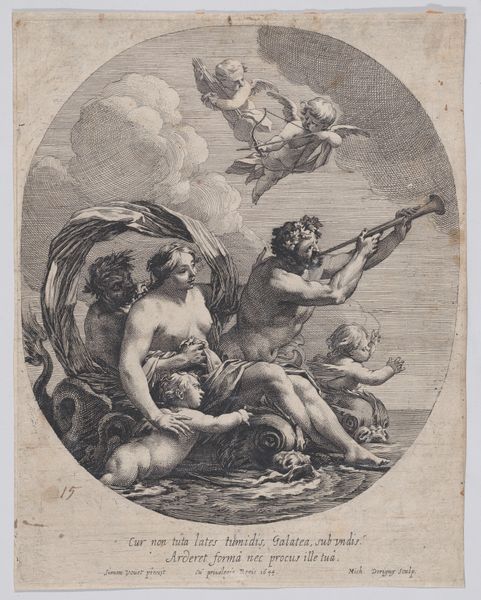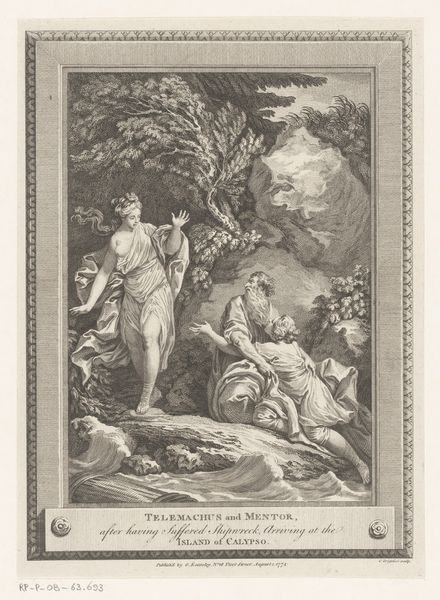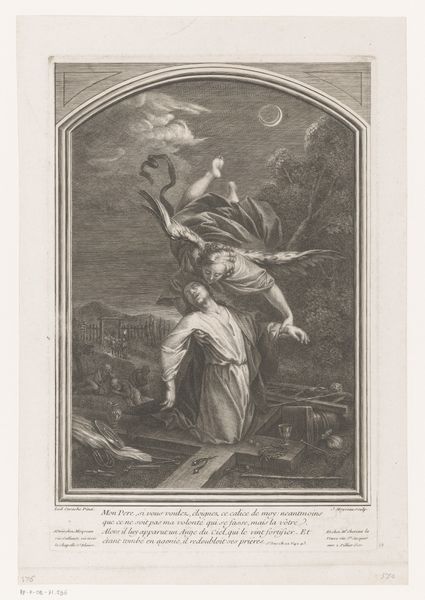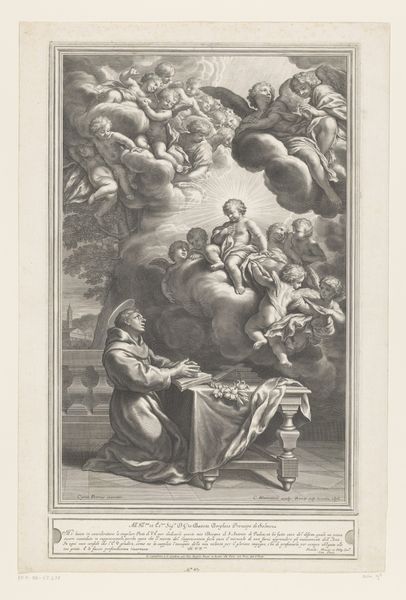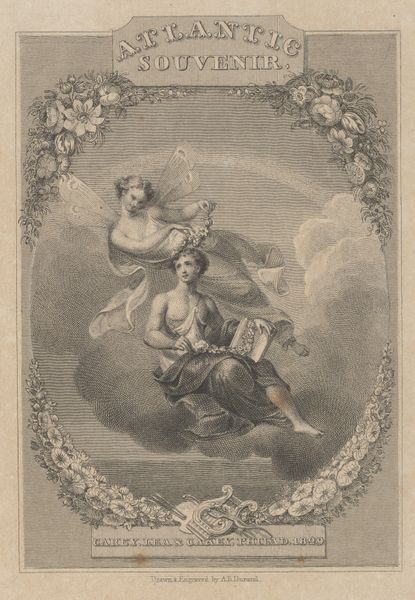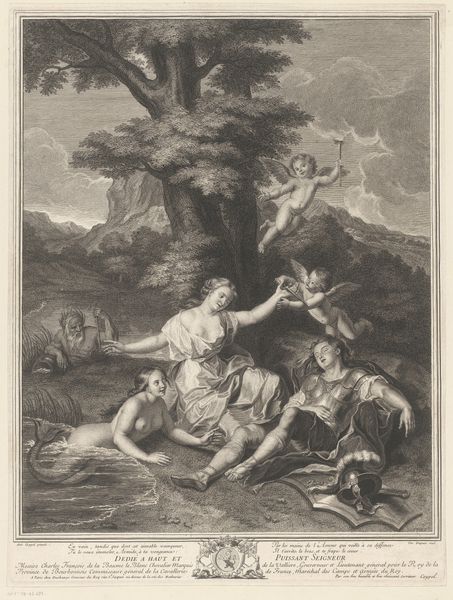
Dimensions: 427 mm (None) x 356 mm (None) (billedmaal)
Curator: Good afternoon, everyone. We’re looking at Andreas Flint’s engraving, "Moses with the Burning Bush," created in 1792. It's currently part of the collection at the SMK, the National Gallery of Denmark. Editor: The sheer drama jumps out immediately. There's such dynamism captured in monochrome, from Moses' recoiling figure to the fiery vision looming above. The scale feels epic even within this relatively small print, promising world-altering consequences. Curator: It’s fascinating how Flint encapsulates a pivotal moment. We have Moses at the base of the image, struck by the theophany of God represented within the burning bush along with two other, somewhat ambiguous, ethereal figures. It emphasizes this idea of revelation and divine instruction through an image. Editor: And the snake near Moses… It suggests a potent undercurrent of warning and possibly the power struggle about to take place between faith and Pharaoh’s tyranny. The inclusion positions Moses right at the cusp, caught between old dangers and new divine empowerment, shaped by this historical and sociopolitical tension. Curator: Indeed, the symbols build narrative momentum, reflecting the potent cultural memory linked to this story of deliverance. It taps into humanity's collective fascination with stories of theophany, theophany often represented as divine flames speaking with authority, but here you have divine company—who are these figures with God, who have these associations? What psychological weight are they there to add? Editor: And the way Flint deploys a Baroque sensibility, heightening the contrast and imbuing it with grandiosity, elevates the event from a personal experience to a moment with significant public meaning. You can see the impact the artwork wants to have as the story's influence began reshaping socio-political norms in the broader context of the world. Curator: Flint creates such a fascinating visual that connects the cultural importance to personal experience. Each time you view the image, one could be influenced by their prior connections and place in life to the figure's placement in relation to one another, and with God. The visual layering is a wonderful touchstone for those considering the weight and presence of culture and belief within our personal understandings. Editor: Yes, exactly, it's how an artistic image, mediated through printing techniques, amplifies not only a religious moment but reshapes collective memory in early public experience with imagery of faith and its social impact. Curator: Precisely, which leaves one considering both personal and communal memory shaping faith and belief and, in return, reshaping visual culture in dialogue. Editor: Very insightful!
Comments
No comments
Be the first to comment and join the conversation on the ultimate creative platform.
